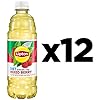Most of you probably know that medications undergo clinical trials for years before they are released. During that time, the positive and adverse effects are both monitored.
Why is it that only the favorable effects are reported, and the severe adverse effects are revealed only when the general public has been using that drug for years? In this study, some drugs were pulled out of the market after years of use and several thousand were injured.
Early this year, Lancet published a study that showed what happens to patients, clinicians, and manufacturers when severe drug reactions are identified. I posted this because of relevance.
I copied and pasted the results from the study. I added the brand names in bold. Highlights are added. You may want to read further. Some of these drugs are still around.
What happened to patients?
Fenfluramine-phentermine, commonly known as fen-phen, brand name Aminorex, is a weight-loss drug.
Fenfluramine-phentermine Aminorex reportedly injured or resulted in death for 600,000 persons.
Persons with fenfluramine-phentermine associated cardiac valvulopathy, many of whom were middle-aged women, presented with shortness of breath that worsened over several weeks to
months. Many affected women either died or became ill from
cardiac failure.
Bisphosphonates are prescribed for osteoporosis.
During the years 2000 to 2003, persons with breast cancer or multiple myeloma who developed bisphosphonate-associated osteonecrosis frequently were misdiagnosed by dentists who were not familiar with the then yet-to-be reported syndrome.
Osteonecrosis happens when the blood supply to a bone is reduced. Bone death and breakdown, and joint collapse follows. Bisphosphonates are still on the market. If you are taking something to strengthen your bone that ends with a -nate, make sure you are aware of that.
Epoetin or darbepoetin are prescribed to people with kidney failure to increase the number of their blood cells.
For persons with severe toxicity from epoetin or darbepoetin, presentations included difficult to treat hypertension or cardiac events in the dialysis setting or venous thromboembolism or
tumor progression in the cancer setting
Levofloxacin or Levaquin is a common antibiotic for urinary tract infections and upper respiratory infections. It is still on the market.
Persons with neuropsychiatric toxicity following levofloxacin administration developed agitation, difficulty concentrating, severe muscle and nerve pain, suicidal thoughts, or completed suicides
Gadodiamide is commonly known as gadolinium and is for MRI imaging. If you develop a stroke vaccine-related or not, you may get injected with this. Fibrosis is the formation of excessive fibrous tissue. It makes an organ lose its elasticity and its normal function.
Persons with gadodiamide-associated nephrogenic systemic fibrosis presented with progressive skin fibrosis and increasingly severe fibrosis of the liver, lungs, heart, and kidneys.

Clinician Repercussions
These clinicians thought they were only doing their job but faced severe personal and professional consequences from big pharma.
Eleven of 18 clinicians (61%) reported personal or professional repercussions.
Five clinicians reported receiving personal threats from executives of pharmaceutical manufacturers (for rosiglitazone Avandia, bisphosphonates Aridia, Zometa, cox-2-inhibitors Celebrex, and Articular Surface Replacement hips).
One Professor of Medicine lost an academic medical position after his ADR study was published
Lawsuits and threats of lawsuits were reported by three clinicians
One clinician who reported a Phase III randomized clinical trial was sued by a pharmaceutical manufacturer for incorrectly naming the implicated product. After an erratum was filed, the lawsuit was dropped.
Requests by five clinicians to report their findings at FDA advisory committees were not accepted by FDA personnel who coordinated these meetings. This included clinicians who had reported very serious ADRs with bisphosphonates, rosiglitazone, and aprotinin Trasylol.
Manufacturer Repercussions
Manufacturer representatives publicly stated that rosiglitazone,
zolendroic acic, pamidronate, epoetin, darbepoetin, articular surface
replacement hips, cox-2-inhibitors, fenfluramine-phentermine,
gadodiamide, and levofloxacin were unlikely causes of very serious
ADRs.
Doesn’t that sound familiar nowadays from Pfizer, Moderna, and J & J?
Some manufacturers lost the lawsuit and had to pay.
Overall, three pharmaceutical manufacturers paid $1.7 billion in criminal fines and civil settlements related in part to failure to inform the FDA and physicians about very serious ADRs associated with four drugs- valdecoxib Bextra ($1.3 billion and $1 billion, respectively), rofecoxib Vioxx ($321 million and $628 million, respectively), and epoetin Epogen and darbepoetin Aranesp ($150 million and $610 million, respectively)
Q: Why do drug companies risk getting sued if they release a problematic drug?
A: Because they make more than they may lose.
Third, while corporate costs of these ADRs were large ($39.8 billion in legal fines and settlements and $24.2 billion in lost revenue),
this amount represents probably less than one to two years of sales for the fifteen drugs and one device in our study.

How about the big bosses of the drug companies? Did they go to jail or pay fines?
Notably, no pharmaceutical executive associated with very serious ADRs (adverse drug reactions) paid financial penalties for failing to disclose ADRs.
Be healthy with lifestyle changes so you won’t need drugs. Don’t Get Sick!
Related:
- I Have Seen the Promised Land of Health Care! It’s in another Galaxy!
- China Makes Most Drugs for the United States.
- 30 Ways For a Good Sleep Without Drugs
- How Does Sleeping Protect the Brain?
- 25 Stress-Reduction Techniques
- What is Insulin Resistance?
- The Magical Endothelium
- 8 Ways Decent Dental Care Defies Dementia
- How to be Active from Sedentary
- 21 Benefits of High-Intensity Interval Training
- How to Do Intermittent Fasting
- Early Time-Restricted Feeding is Intermittent Fasting In Sync with the Circadian Rhythm
Reference:
Bennett CL, Hoque S, Olivieri N, et al. Consequences to patients, clinicians, and manufacturers when very serious adverse drug reactions are identified (1997-2019): A qualitative analysis from the Southern Network on Adverse Reactions (SONAR). EClinicalMedicine. 2020;31:100693. Published 2020 Dec 23. doi:10.1016/j.eclinm.2020.100693
© 2018 – 2021 Asclepiades Medicine, L.L.C. All Rights Reserved
DrJesseSantiano.com does not provide medical advice, diagnosis, or treatment
As an Amazon Associate, I earn from qualifying purchases.
Canada Dry Zero Sugar Cherry Gingerale Fruit Splash 12oz, Pack of 12
$5.00 ($0.03 / Ounce) (as of June 3, 2025 05:40 GMT -04:00 - More infoProduct prices and availability are accurate as of the date/time indicated and are subject to change. Any price and availability information displayed on [relevant Amazon Site(s), as applicable] at the time of purchase will apply to the purchase of this product.)Snapple Zero Sugar Peach Tea, 16 fl oz recycled plastic bottle (Pack of 12)
Lipton Diet Mixed Berry Green Tea, 16.9 Fl Oz Bottles (Pack of 12)
$5.97 ($0.50 / Count) (as of June 2, 2025 17:02 GMT -04:00 - More infoProduct prices and availability are accurate as of the date/time indicated and are subject to change. Any price and availability information displayed on [relevant Amazon Site(s), as applicable] at the time of purchase will apply to the purchase of this product.)Canada Dry Zero Sugar Ginger Ale Soda, 12 fl oz cans, 12 pack
34% OffDiscover more from Don't Get Sick!
Subscribe to get the latest posts sent to your email.




























